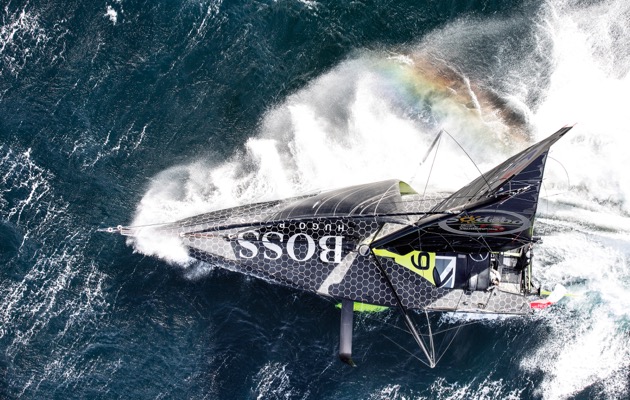Why the defining battle of this Vendée Globe has been the rivalry between Alex Thomson and Le Cléac'h and their two blisteringly fast foil-borne yachts
When François Gabart won the Vendée Globe solo round the world race in 2013 at his first attempt, he set a superb new record of 78d 2h and many said it would stand for years.
Well it did – it stood for precisely four years, just one edition of this race.
This week we will see either Armel Le Cléac’h or Alex Thomson taking the next winner’s place on the podium. Both are set to break Gabart’s record time by some three days. They have driven each other on to a pace never before seen in this class.
But also look at what’s happened to the IMOCA 60 design in those four years. Some fundamental aspects have changed, and in ways few sailors, designers or pundits could have predicted.
After the last race, the class association voted for safety’s sake to adopt a one-design rig and keel. That led to the the boats being heavier. So designers looked for ways to redress the balance. This coincided with the advent of foils in elite multihulls and their dynamic use in increasing righting moment and reducing displacement made them applicable to the new build IMOCAs.
Find out more about the latest Vendée Globe foils and how they work.
Thus the law of unintended consequences has been responsible for what has been one of the largest speed jumps in the race’s history.
And Alex Thomson and Armel Le Cléac’h were just the skippers to use them, punchy sailors with the breadth of experience and seamanship needed to push this technology hard yet safely.
Foils themselves are no magic bullet. As proof, consider that Dutch sailor Peter Heerema also has a foil-equipped new VPLP design of the same new generation but is currently 8,700 miles behind the duo. There is the difference between an amateur racer on his first big round the world race, and battle-honed professionals such as the two leaders.
Monohull foil design is in its infancy and we can expect its innate potential to be developed greatly over the next four years. So before it is even set, this new record stands ripe be bettered in the future, perhaps in the next race in 2020.
While Le Cléac’h and Thomson may well feel after several consecutive Vendée Globes (three for Le Cléac’h and four in Thomson’s case) that they have earned their stripes and should move on, they might equally believe they have a rich advantage to exploit in developing and mastering the next versions of these boats and foils.

Onboard image bank for Armel Le Cleac’h (FRA), skipper Banque Populaire-
This may explain, in part, the secrecy that has shrouded these two great rivals’ campaigns. We may think we know what has happened to Alex Thomson on his race round the world, but is there a much fuller story to be told in a few days’ time?
That is something Vendée Globe race director Jacques Caraës has been wondering. I spoke to him about the impending finale of the race and the battle that has raged all the way round the world between Le Cléac’h and Thomson, one that has defined this race.
In this interview, he tells us more about the impact of foils, the future of the race, and what’s behind the careful secrecy of the leaders as they count down the miles to the finish.
Follow us Yachting World on Facebook for more updates on this and other races and events as they happen.




